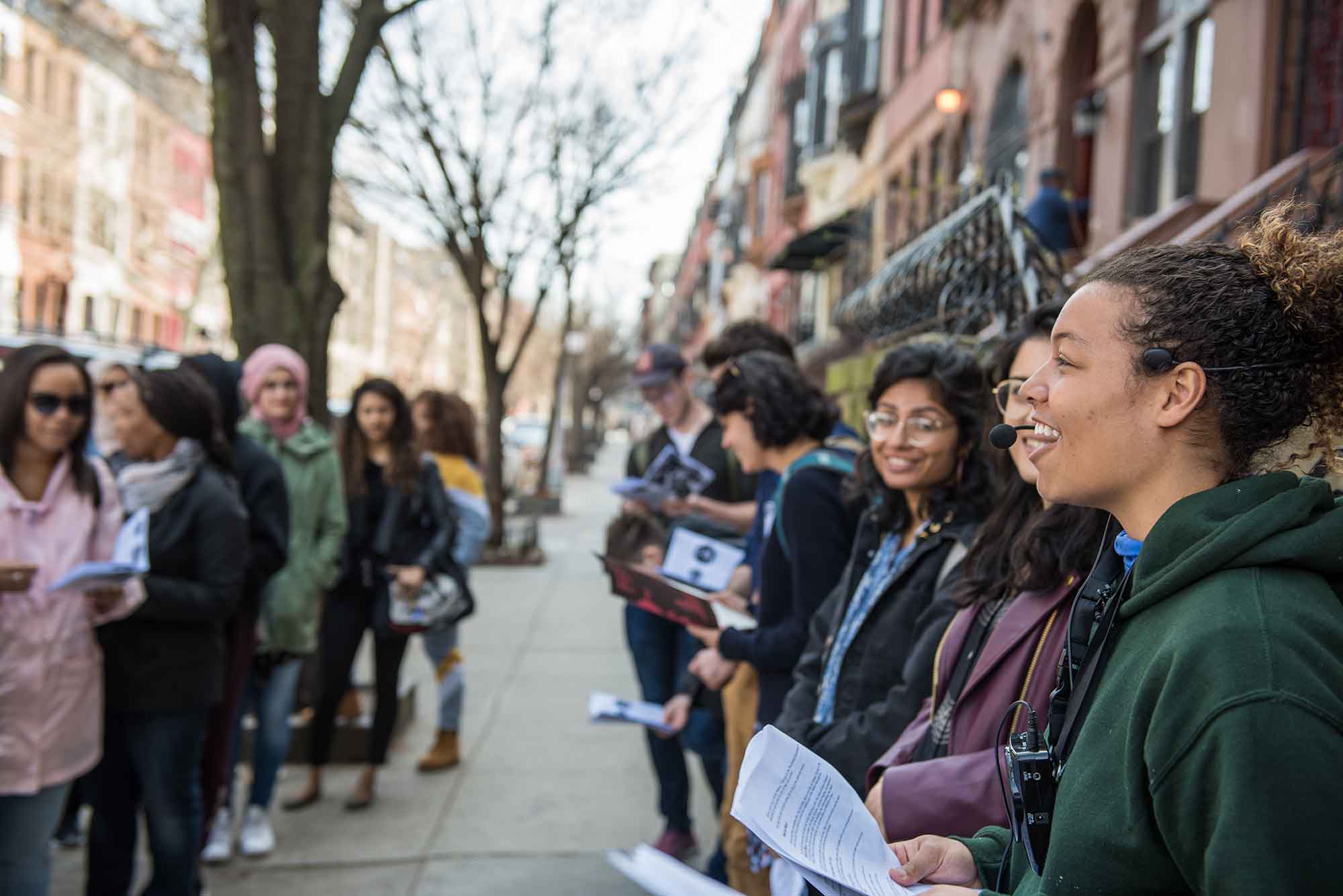Radical Black Women of Harlem Walking Tour
Map design by Arrianna Planey
Publication design by Neta Bomani
Harlem is both an idea and a place. What became known as the ‘Black Mecca’ began as a farming village inhabited first by the Lenape and then by the Dutch. The first Black people in Harlem, both freed and enslaved, worked on farms in the area known as Niew Haarlem. New Haarlem was formally established as a settlement by Peter Stuyvesant in 1658 and was named after the Dutch city of Haarlem. For generations, the sole connection between Niew Haarlem and Niew Amsterdam was a diagonal road built on an old Native path: a street we now call Broadway…
Learn more about this history and the extraordinary contributions of radical Black women who built community, fought for freedom, and imagined other futures, including Williana Jones Burroughs, Regina Anderson Andrews, Ella Baker, Claudia Jones, Lorraine Hansberry, Salaria Kee, Madame C.J. Walker, A’Lelia Walker, Victoria Earle Matthews, Zora Neale Hurston, Louise Thompson Patterson, Dorothy Height, Pauli Murray, Amy Ashwood Garvey, Billie Holiday, Audre Lorde, Madame Stephanie St. Clair, Marvel Cooke, Eslanda Goode Robeson, Una Mulzac, Grace Campbell, and Willie Mae Mallory.

Above, Asha Futterman leading the first Radical Black Women Walking Tour on April 7, 2019, with over 35 people in attendance, co-facilitated by Mariame Kaba.
The Radical Black Women of Harlem Walking Tour offers an important contribution to the effort to uplift Black women’s intellectual, social and political work. We encourage community members, students, and educators to use this guidebook to organize tours in New York City, or as inspiration to design guidebooks in other neighborhoods and cities. Download the guide here.
Header image credit: Ola Ronke Akinmade
Photo credit: Matt Harvey
Read Mariame Kaba’s reflections in “Genealogy of a Walking Tour.”